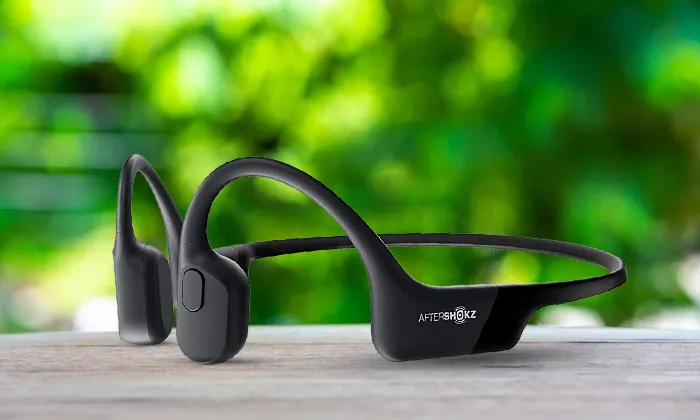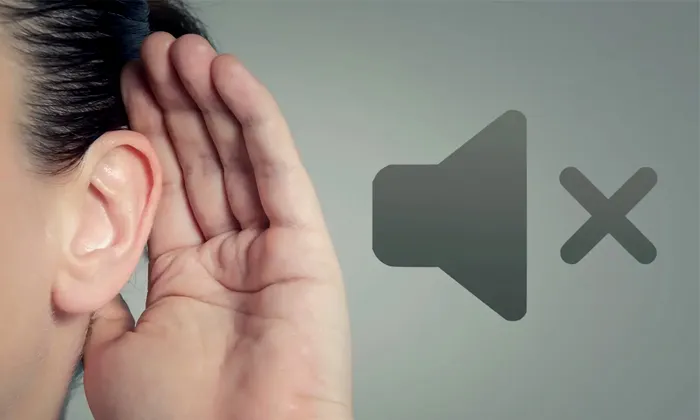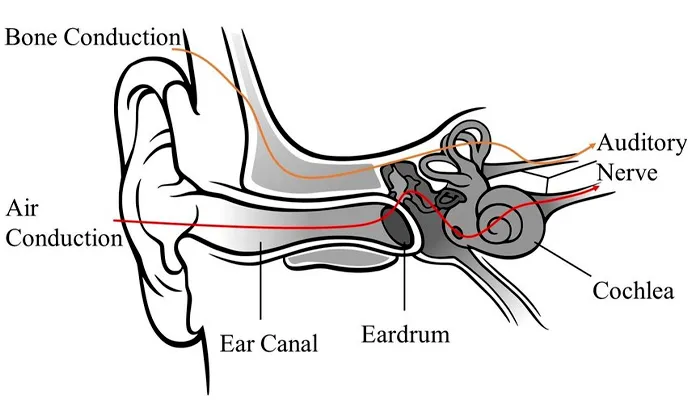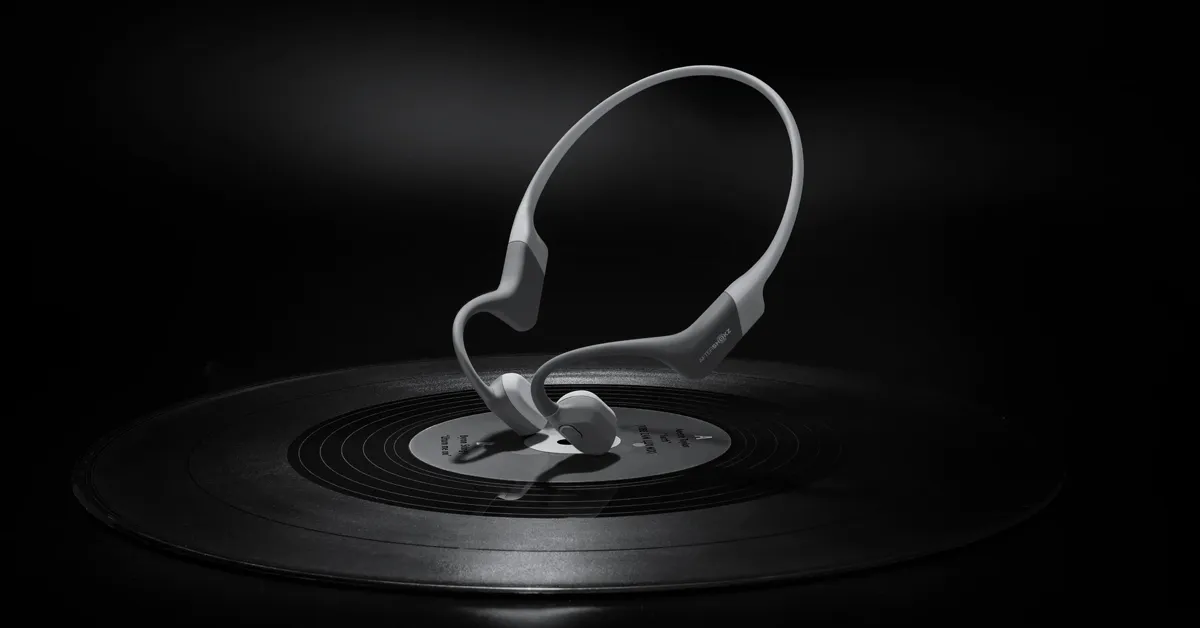If you or someone you know has hearing loss, you may have heard of bone-conduction headphones as a potential solution. But what exactly are bone conduction headphones, and can they really help those with hearing impairments?
In short, the answer is yes, bone conduction headphones can be beneficial for some people with hearing loss.
By bypassing the ear canal and directly stimulating the inner ear through the bones in the skull, bone conduction headphones can provide an alternative way for sound to reach the auditory system.
However, as with any technology, there are both pros and cons to using bone-conduction headphones for hearing-impaired individuals.
In this article, we’ll explore the benefits and drawbacks of bone conduction headphones and provide tips for selecting the right pair.
Are Bone Conduction Headphones Good for Hearing Impaired?
Bone conduction headphones have gained popularity in recent years as an alternative audio solution for individuals with hearing impairments. Unlike traditional headphones that deliver sound directly into the ear canal, bone conduction headphones work by transmitting vibrations through the bones of the skull, bypassing the outer and middle ear and directly stimulating the inner ear.
This unique mechanism allows sound to reach the auditory system, making bone conduction headphones a viable option for some people with hearing loss.
The effectiveness of bone conduction headphones for hearing-impaired individuals depends on the type and severity of the hearing loss.
They can be particularly useful for those with conductive or mixed hearing loss, where sound transmission through the outer or middle ear is impaired.
In such cases, bone conduction headphones can bypass the damaged parts of the ear and directly stimulate the cochlea, enabling individuals to perceive sound more clearly.
Moreover, bone conduction headphones can also benefit people with certain types of sensorineural hearing loss, where the damage lies within the inner ear or auditory nerve.
Although not all individuals with sensorineural hearing loss will find bone conduction headphones as effective as traditional hearing aids, some may experience improved sound perception and speech understanding, especially in situations with background noise.

Pros and Cons of Using Bone Conduction Headphones for Hearing-Impaired People
How Can Bone Conduction Headphones Help Hearing Impaired People?
Bone conduction headphones can provide several benefits for individuals with hearing impairments. Here are some ways they can help:
Bypassing Outer and Middle Ear Issues
For individuals with conductive or mixed hearing loss, where the outer or middle ear is affected, bone conduction headphones offer an alternative pathway for sound.
By transmitting vibrations through the bones of the skull, they bypass the damaged parts of the ear and directly stimulate the cochlea in the inner ear. This enables individuals to perceive sound even when traditional air conduction is compromised.
Enhanced Sound Awareness
Bone conduction technology allows individuals to maintain awareness of their surroundings while listening to audio content.
Since the headphones do not cover the ears, the individual can still hear ambient sounds, which can be particularly important for safety in certain situations, such as when walking or jogging outdoors.
Comfort and Accessibility
Some individuals may find traditional headphones or hearing aids uncomfortable, especially when they have sensitive ear canals or experience irritation.
Bone conduction headphones eliminate the need for insertion into the ear canal, making them more comfortable and accessible for those with such concerns.
Decreased Occlusion Effect
The occlusion effect refers to the perception of one’s voice sounding unnatural or amplified when wearing headphones or hearing aids that fully block the ear canal.
With bone conduction headphones, this effect is minimized as the ear canal remains open, resulting in a more natural sound experience.
Compatibility with Glasses and Hearing Aids
Bone conduction headphones can be worn comfortably with eyeglasses or other head-worn devices, as they do not interfere with the placement of these accessories.
Additionally, individuals who already use hearing aids may still benefit from bone conduction technology as it can complement their existing devices or serve as an alternative option.

What type of hearing loss requires a bone conduction implant?
A bone conduction implant is typically recommended for individuals with specific types of hearing loss that cannot be adequately addressed by traditional air-conduction hearing aids or other interventions.
The primary type of hearing loss that may require a bone conduction implant is conductive hearing loss.
Conductive hearing loss occurs when sound is unable to efficiently reach the inner ear due to problems in the outer or middle ear.
This can be caused by conditions such as chronic ear infections, congenital abnormalities, or damage to the ear canal or middle ear structures.
In cases where conductive hearing loss cannot be effectively managed through medical or surgical interventions, a bone conduction implant may be considered.
Additionally, bone conduction implants can also be suitable for individuals with mixed hearing loss, which is a combination of conductive and sensorineural hearing loss.
Mixed hearing loss involves problems in both the outer or middle ear and the inner ear or auditory nerve pathways.
Can Bone Conduction Headphones Help People with Hearing Loss?
Yes, bone-conduction headphones can help people with certain types of hearing loss. They offer an alternative method of sound transmission that bypasses the outer and middle ear and directly stimulates the inner ear through vibrations transmitted through the skull.
This can be beneficial for individuals with conductive hearing loss, mixed hearing loss, and some cases of sensorineural hearing loss.
Conductive Hearing Loss
Bone conduction headphones are particularly useful for individuals with conductive hearing loss, where sound transmission through the outer or middle ear is impaired.
By bypassing the damaged parts of the ear, these headphones can directly stimulate the cochlea, allowing individuals to perceive sound more clearly.
Mixed Hearing Loss
Individuals with mixed hearing loss, which involves both conductive and sensorineural components, can also benefit from bone conduction headphones.
The headphones can address the conductive component by bypassing the damaged middle ear and stimulate the inner ear for improved sound perception.
Some Sensorineural Hearing Loss
While bone conduction headphones may not be as effective as traditional hearing aids for all cases of sensorineural hearing loss, they can still provide benefits for certain individuals.
In particular, they may help improve sound perception and speech understanding, especially in situations with background noise.

Which is better Air or Bone Conduction?
Air conduction is the most common method of sound transmission, where sound waves travel through the air and enter the ear canal, causing the eardrum to vibrate. Traditional headphones and hearing aids that utilize air conduction are widely used and have proven to be effective for many individuals with hearing loss.
Compared to bone conduction, air conduction has certain advantages. Air-conduction headphones typically offer a wider frequency range and can provide more accurate and natural sound reproduction.
They are designed to fit snugly in or over the ear, allowing for better sound isolation and improved audio quality, especially in environments with high levels of background noise.
In addition, air conduction hearing aids are available in various styles and designs, including behind-the-ear (BTE), in-the-ear (ITE), and completely-in-the-canal (CIC) devices.
These can be custom-molded to fit the individual’s ear, ensuring a comfortable and personalized fit.
Furthermore, air conduction technology has been extensively researched and developed over many years, leading to advanced features such as directional microphones, noise reduction algorithms, and feedback cancellation systems.
These advancements contribute to enhanced speech understanding and overall listening comfort.
However, it’s important to note that air conduction has its limitations, especially for individuals with specific types of hearing loss.
In cases where the outer or middle ear is severely damaged or non-functional, air conduction may not be as effective. This is where bone conduction technology can provide an alternative solution.
Bone conduction headphones, as discussed earlier, bypass the outer and middle ear by directly stimulating the inner ear through vibrations transmitted through the skull.
While they may not provide the same level of sound quality and amplification as air conduction headphones or hearing aids, they can be beneficial for individuals with conductive or mixed hearing loss, as well as certain types of sensorineural hearing loss.
Tips for Selecting the Right Pair of Bone Conduction Headphones
When selecting the right pair of bone conduction headphones, consider the following tips to ensure a satisfactory listening experience:
Sound Quality
Look for bone conduction headphones that provide clear and balanced sound reproduction. Read reviews or try them out if possible to assess the audio quality and ensure it meets your expectations.
Comfort and Fit
Consider the comfort and fit of the headphones, as you’ll be wearing them for extended periods. Look for adjustable bands or straps that can be customized to fit your head comfortably. The headphones should sit securely on your temples or cheekbones without causing discomfort or pressure.
Water and Sweat Resistance
If you plan to use the headphones during physical activities or in moist environments, opt for models that have water and sweat resistance. This ensures their durability and helps prevent damage from moisture.
Connectivity Options
Check the connectivity options provided by the bone conduction headphones. Many models offer Bluetooth connectivity, allowing you to wirelessly connect to your devices. Ensure compatibility with the devices you plan to use, such as smartphones, tablets, or computers.
Battery Life
Consider the battery life of the headphones, especially if you intend to use them for extended periods without frequent recharging. Look for headphones with a battery life that meets your needs and preferences.
Controls and Accessibility
Evaluate the control options available on the headphones. Some models have built-in buttons or touch controls that allow you to adjust volume, play/pause music, or answer calls easily. Ensure that the controls are intuitive and accessible for your convenience.
Additional Features
Explore any additional features offered by the headphones, such as built-in microphones for hands-free calling or compatibility with voice assistants like Siri or Google Assistant. These features can enhance the functionality and convenience of the headphones.
Price and Warranty
Consider your budget when selecting bone conduction headphones, as prices can vary. Compare different models and brands to find the best value for your money. Additionally, check the warranty provided by the manufacturer to ensure adequate support in case of any issues or defects.
Final Thoughts
In conclusion, bone conduction headphones offer a unique and alternative solution for individuals with hearing impairments.
They provide benefits such as improved situational awareness, comfort, and compatibility with glasses or hearing aids.
However, it’s essential to consider the specific type and degree of hearing loss, and individual preferences, and consult with a hearing healthcare professional for personalized guidance.
By understanding the pros and cons, selecting the right pair, and exploring the potential of bone conduction technology, individuals with hearing impairments can make informed decisions to enhance their auditory experience and quality of life.
Related
- Can Bone Conduction headphones cause Tinnitus?
- Can Bone Conduction Headphones Cause Cancer?
- Bone Conduction Headphones Side Effects
- Charging Bluetooth Headphones During Use: Is It Possible? - January 9, 2024
- Why Over-Ear Headphones Best for Hearing Health? (7 Reasons) - December 12, 2023
- Fixing the Bose Earbuds Not Charging in Case Problem: Solutions That Work - November 24, 2023
